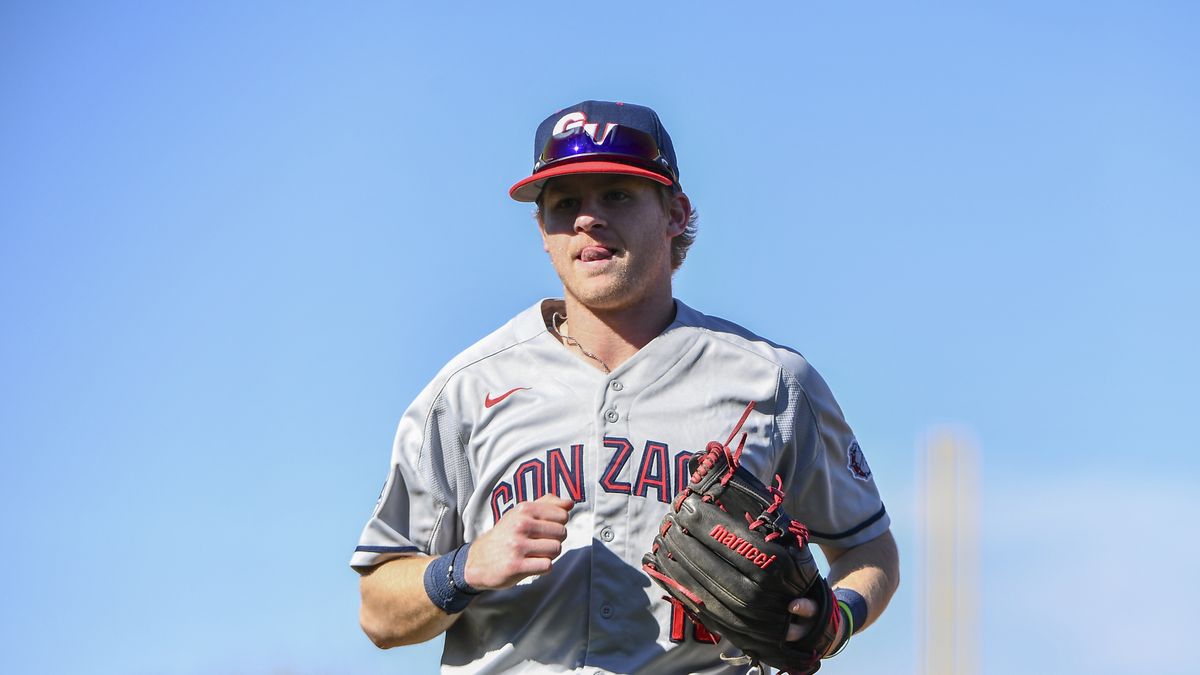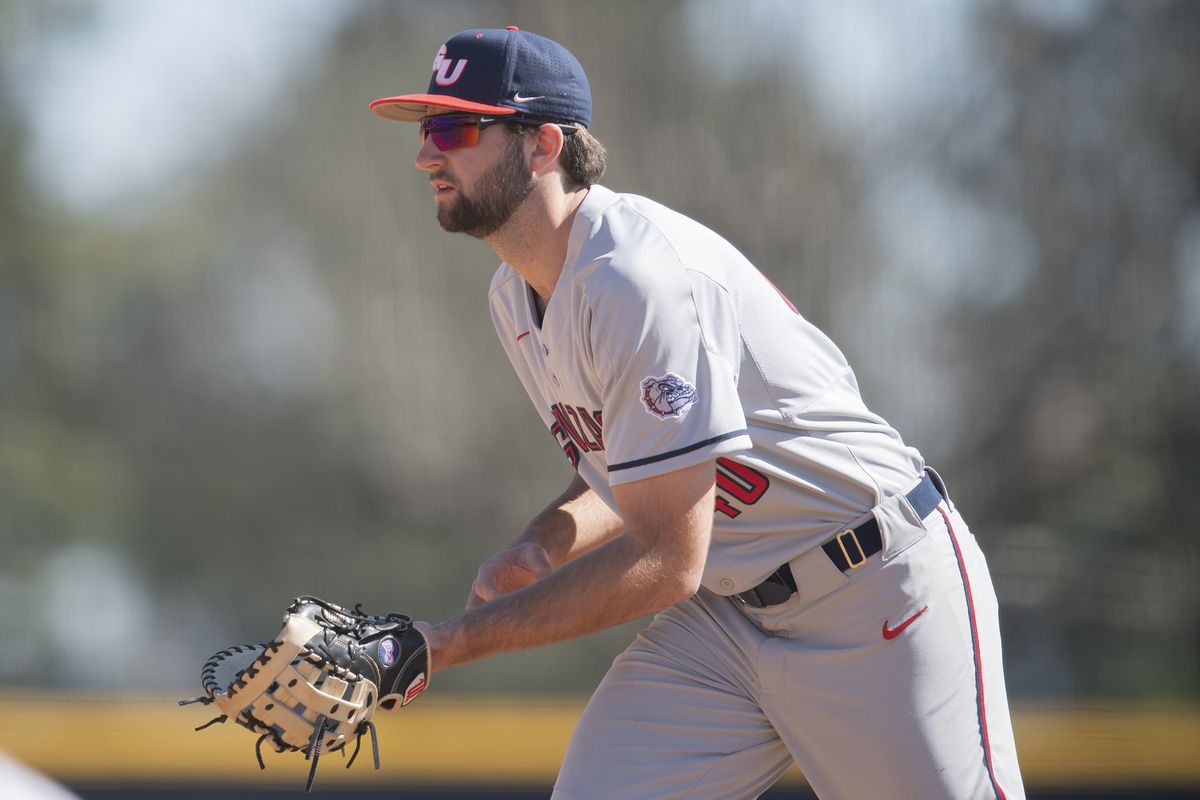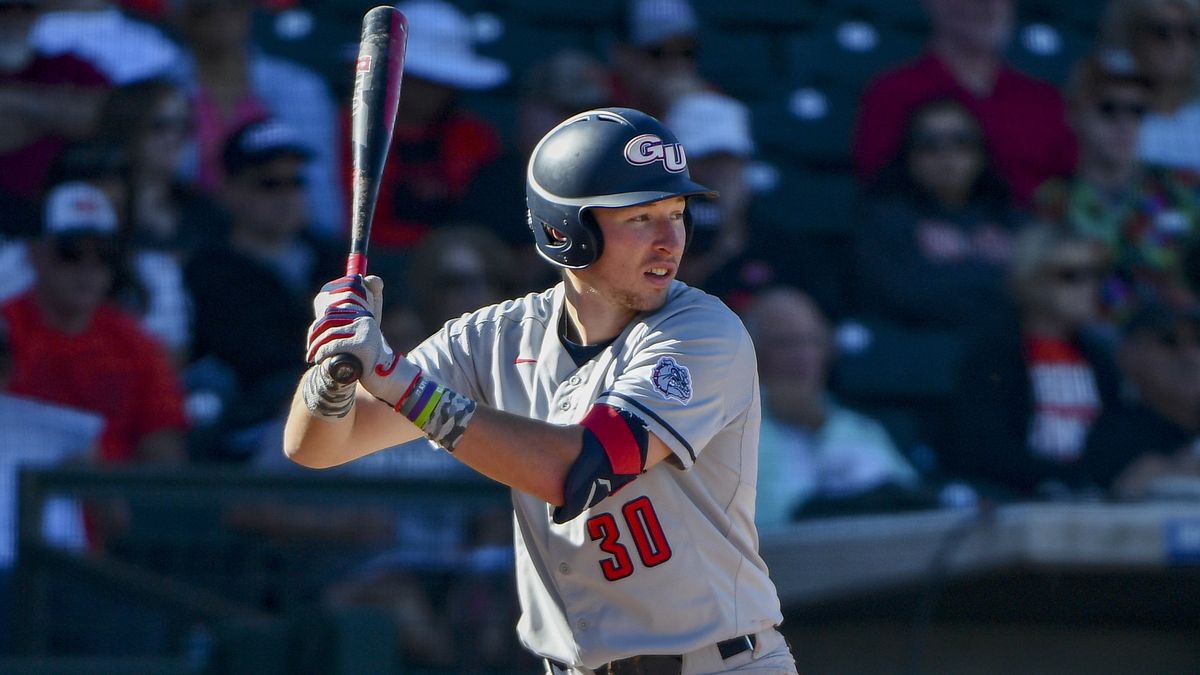Shortened MLB draft leaves Gonzaga baseball roster fortified by unusual returners
Gonzaga’s Brett Harris (Associated Press)
When MLB made the decision to truncate its draft from 40 rounds to five due to COVID-19, it only further aggravated the uncertainty of thousands of college baseball players still reeling from a season that felt like it ended before it really even started.
And for the many more who would’ve been drafted in any other circumstances, a $20,000 limit on signing bonuses left them with a raw deal.
But the current tumult also means many college programs may stand to benefit come next spring. More often than not, talented players are opting for the security of another year in school over a shot at the big leagues in hopes of a return to normal next year.
Gonzaga may be among the teams that benefits the most.
Although GU pitchers Mac Lardner and Nick Trogrlic-Iverson, both seniors, signed as free agents with the St. Louis Cardinals following the draft, multiple other Zags players who considered signing similar deals will be returning to school to form a formidable core for next year’s team – a combination of seniors and younger players that might have been selected in a full draft, all with an extra year of eligibility.
“We have some unfinished business with Gonzaga baseball,” said rising redshirt junior Brett Harris, who turned down multiple free-agent offers. “We had a hell of a team this year, and we’re running it back with our core guys.”
Harris said he valued returning to school and completing his bachelor’s degree more than going pro early, especially considering the abrupt nature of last season’s end.
“I didn’t know I played my last game at Gonzaga, and I didn’t want to go out just knowing that I walked off the field, not even knowing I played my last game,” he said. “I told scouts that, too.
“I told them, I’m not going to take a free-agent deal. I believe that I’m worth more than $20,000.”
Redshirt senior shortstop Ernie Yake found himself in a similar position before coming to the same conclusion.
After leading GU in hits during the shortened season and never batting below .302 in his three years in a Zags uniform, Yake drew interest from teams looking to take him near the tail end of the draft.
Yake specifically named the Chicago White Sox, who he said offered to make him their No. 1 priority in the fifth round.
The catch? He’d have to take less than a third of the slot value of Chicago’s pick.
“(The White Sox) called me and asked if I’d take $50,000 in the fifth round,” Yake said. “And with the slot value being $386,600, I was like, ‘No way, that’s not worth it.’ “
Then came an offer for $100,000, which Yake said he countered with $180,000 – just under half the slotted amount. The White Sox declined, and instead chose to take lefty pitcher Bailey Horn from Auburn with their final pick.
“I held my ground and set my value,” Yake said. “I didn’t want to go for under it. I even went under it to try and get them to draft me … but I didn’t wanna get cheated and get less than I deserve.”
Rising senior righty Alek Jacob, a North Central grad, was arguably the most intriguing pitching prospect on the Zags’ roster last spring. A sidearm ace with a versatile arsenal and a unique delivery, he was the only Zag named a first-team preseason All-American by the National Collegiate Baseball Writers Association ahead of last season.
In a limited sample size last season, Jacob went 3-1 in his starts but ended with an uncharacteristic 3.86 ERA, a far cry from his career 2.71 in 202⅔ innings. Now, with Lardner departed, he will be GU’s clear-cut No. 1 guy.
“A couple of teams reached out and asked if I was interested in a free-agent deal, and I shut it down pretty quick,” Jacob said. “It didn’t make sense to leave for 20 grand and then try to come back and finish school.”
Senior infielder Ryan Sullivan said he was talking to teams, including the Cincinnati Reds and New York Mets, prior to the draft. When those talks fizzled, the chance to stick around for another year while completing a master’s degree was difficult to turn down.
“Honestly, the main reason was because I knew how good this team was going to be,” Sullivan said. “A young core, but so talented.”
A 6-foot-5 slugger with an imposing physical presence, Sullivan’s bursts of power hitting boosted a Bulldogs team that at times found itself in dire need of run support last season. He led GU in RBIs with 12 and finished second on the team in runs (12) and homers (one).
Despite a 6-10 record and some early struggles in the spring, it was clear that the Zags were gaining some momentum before the season’s cancellation in March. Their last game, a 15-3 drubbing of Washington State in Pullman, was their highest-scoring outing of the season.
“We had so much to accomplish, and we were just starting to get into a groove,” Harris said. “But next year I want to get a ring with a big GU Bulldog on it.”
And for head coach Mark Machtolf, the influx of returning talent only bolsters his confidence in what he believes his team is capable of. That much hasn’t changed.
“We’re not afraid to say that our ultimate goal is to get (to the College World Series) and continue to get there,” he said. “Maybe this will be the group that pushes us over the top.”


